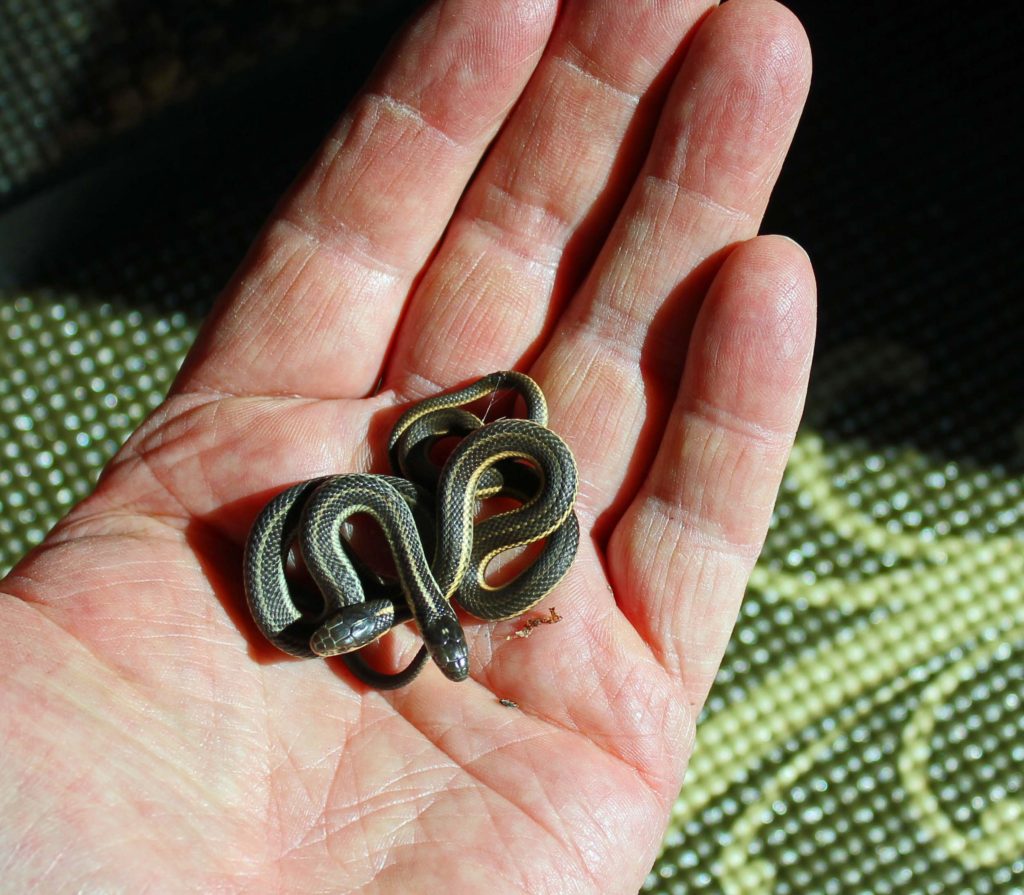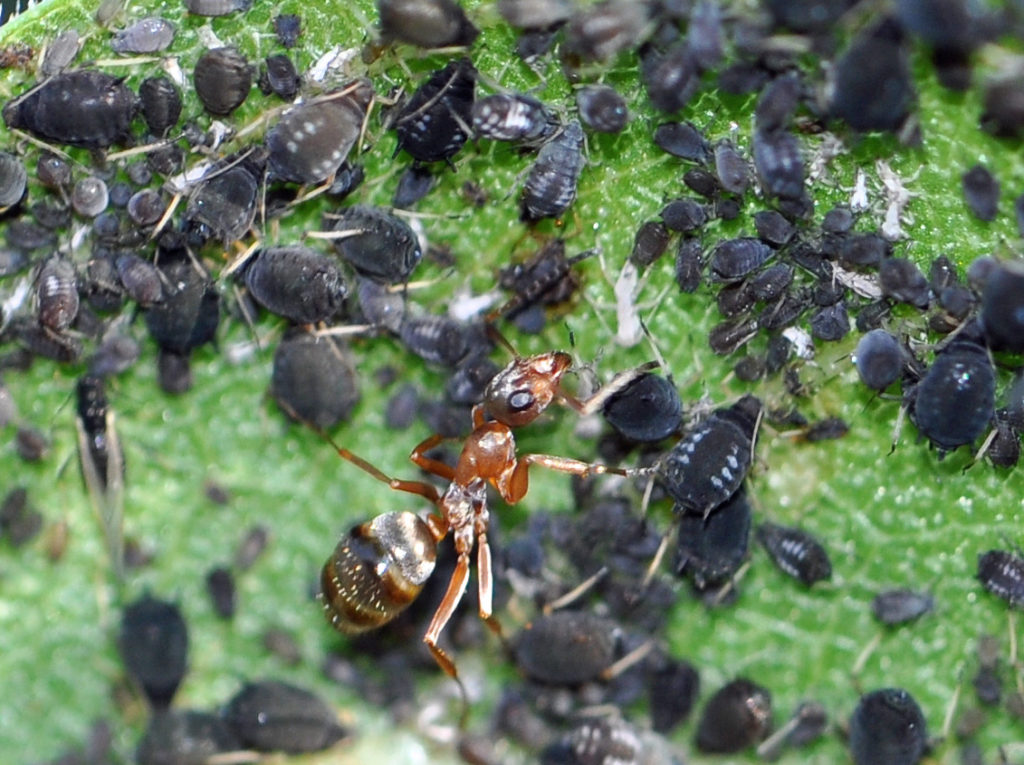Although the photograph does not accurately show the color difference between the snakes, it was very visible to my eye. The photo of the harvest ant herding its flock of aphids is a tribute to Swiss naturalist Charles Bonnet.
I recently discovered a pair of beautiful new born garter snakes in my backyard. Hardly big news but the sight of little things triggered my curiosity as usual. Based on their size and location I assumed they were from the same litter but each possessed a distinctly different color as is evident in the above photos. I took them in for a couple of weeks to see if their individual colors would progress or revert to something similar. The colors remained different on each snake so I let them go in the same location I had discovered them in. Garter snakes, especially our Northwest species, come in a variety of beautiful colors and this pair reinforced that fact. As I pondered the delicate beauty of the tiny serpents I was also watching one of the Great Courses I’d ordered from National Geographic, “Zoology, Understanding the Animal World.” If, like me, it has been many years since you formally studied the subject this is a great refresher to bring you up to date. The section of the course that deals with reptiles mentioned parthenogenesis. The lecturer, Donald E. Moore, had covered this topic earlier but in this section of the course he interviews Lauren Augustine, curator of reptiles at the Smithsonian National Zoo Reptile House. MS Augustine and Dr. Moore discuss a female Asian Water Dragon that has been in captivity without any other lizards male or female for the past eight years. Recently, and very unexpectedly, this lizard laid several eggs which are developing normally. This triggered my memory of several other reports about parthenogenesis in reptiles that have recently made news. So I went online and looked around. With very little effort here are a few of my findings about reptiles giving birth without fertilization:
From Reptile Report (ReptileReport.com):
-
Crested Gecko 2013
-
Albino Python 2012
From Reptiles Magazine (ReptilesMagazine.com)
-
New Caledonian Giant Gecko 2009
-
Copperhead snake 1998
From Live Science (LiveScience.com):
-
Yellow Bellied Water Snake 2015 – the second time in 2 years!
From Encyclopedia Britannica (Britannica.com):
I discovered that the study of parthenogenesis is not new by a long shot. It was first described in the 1700s by a Swiss lawyer named Charles Bonnet (1720-1793). Although he was a lawyer Charles had a passion for natural science. He discovered and described the birth and development of unfertilized eggs while studying aphids and ants. Shows what you can do with a hobby! This work was further carried on by a German biologist, Jacques Loeb, (1859-1924) who actually provoked parthenogenesis by manipulating environmental conditions. Loeb began working with unfertilized sea urchin eggs and then went on to work with frogs. His studies shed much light on the process and initiation of cell division.
I am sure there are many more examples of parthenogenesis in reptiles and other vertebrate species as well so I will be following up this post with more research on the topic.
Please send comments or critiques to reganjm@northwestwildlifeonline.com
<
>



Leave a Reply
You must be logged in to post a comment.